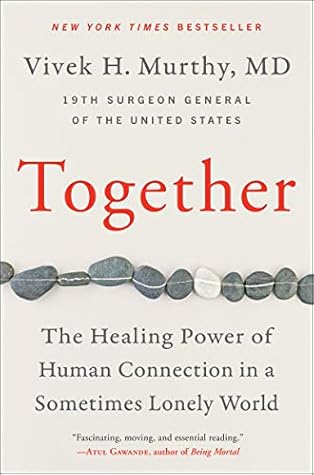More on this book
Community
Kindle Notes & Highlights
Read between
February 17 - March 1, 2023
Spend time each day with those you love. This is not limited to the people in your immediate household. Reach out also to the other members of your lifeline via phone or, better yet, videoconference, so you can hear their voices and see their faces. Devote at least fifteen minutes each day to connecting with those you most care about. Focus on each other. Try to eliminate distractions when interacting with others. Forget about multitasking and give the other person the gift of your full attention, making eye contact, if possible, and genuinely listening. Embrace solitude. The first step toward
...more
Natalie liked this
These studies and others like them have confirmed something most people suspected: rejection hurts. But they also showed that emotional and physical pain are both processed by the brain in very similar ways.
Though humans have experienced the physical symptoms of social isolation since the time of our first ancestors, “loneliness” as a term didn’t enter the English language until the late sixteenth century. When Shakespeare likened his hero in Coriolanus to a “lonely dragon”1 who goes alone and is feared, cut off from kin and friends, and talked about more than he’s truly seen or known, he was describing a different state than “oneliness,” as being alone was more commonly called in Western Europe at the time.
But after Shakespeare, other writers began to take on social isolation as a moral hazard. In 1667, John Milton went so far as to link loneliness to Satan in Paradise Lost.
“Women talk face to face while men talk shoulder to shoulder.”
“the more puzzling aspects of women’s psychology: the tendency for women to become selfless or voiceless in relationships, to care for others by diminishing themselves, to use their gifts for empathy and relationship to cover over their own feelings and thoughts, and to begin not to know what they want and know.”
This world of ours . . . must avoid becoming a community of dreadful fear and hate, and be, instead, a proud confederation of mutual trust and respect. —President Dwight D. Eisenhower, Farewell Address to the Nation
The Pittsburgh researchers found that the heavy social media users were twice as likely to feel lonely as those in the low-use group.
This theft of time is abetted by the seductive and dangerous myth of multitasking.
All this flipping back and forth actually costs us more time and energy in the end because it takes an average of twenty-three minutes to fully reengage10 with our original subject of focus.
But detaching from technology is more difficult if we use it as an emotional escape, to avoid sadness, conflict, disappointment—and the hard, deep work of relationship.
Solitude allows us to get comfortable being with ourselves, which makes it easier to be ourselves in interactions with others.


